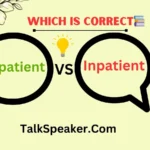The phrase “may or may not” is a staple in English communication, often used to express uncertainty or indecision. Its versatility makes it a valuable tool, but understanding its nuances can significantly enhance your communication skills.
This article delves into the meaning, usage, and impact of “may or may not,” providing practical examples, historical context, and alternatives to help you master this phrase.
Exploring the Meaning Behind “May or May Not”
“May or may not” is a phrase that indicates uncertainty or ambiguity. It suggests that something is possible but not definite. This duality makes the phrase useful in situations where the outcome is unknown or when the speaker wants to keep their options open.
Definition and Basic Explanation
- May: Expresses possibility or permission.
- May not: Indicates that something is not permitted or possible.
- May or may not: Combines both to convey indecision or uncertainty.
Origins and Historical Context
The use of “may” dates back to Old English, derived from the word “magan,” meaning “to be able.” Over time, “may” evolved to express possibility and permission. The phrase “may or may not” emerged as a way to emphasize uncertainty.
How It Fits into English Grammar and Syntax
“May or may not” is a modal verb phrase. Modal verbs, such as can, could, might, should, and would, modify the main verb to express possibility, necessity, or permission. In this phrase, “may” and “may not” are paired to indicate dual possibilities.
The Expression of Indecision
Indecision is a common human experience, and language reflects this through phrases like “may or may not.” Using this phrase can soften statements, making them less definitive and more flexible.
Psychological and Social Reasons for Using Ambiguous Language
- Avoiding Commitment: People often use ambiguous language to avoid making firm commitments.
- Diplomacy: Ambiguous language can be a diplomatic way to navigate sensitive topics.
- Cognitive Load: Indecision might stem from an inability to process all information quickly.
Examples of Indecision in Various Scenarios
- Personal Conversations: “I may or may not go to the party.”
- Professional Settings: “The project may or may not be completed by Friday.”
- Written Communication: “This feature may or may not be included in the next update.”
Contextual Use in Everyday English
The phrase “may or may not” is versatile and appears in various contexts, each adding a layer of meaning depending on the situation.
Common Situations Where “May or May Not” Is Used
- Uncertain Plans: “We may or may not visit the museum this weekend.”
- Conditional Statements: “Depending on the weather, the event may or may not be held outdoors.”
- Speculative Scenarios: “The new policy may or may not improve efficiency.”
Analysis of Tone and Implied Meaning in Different Contexts
The tone of “may or may not” can range from casual to formal, depending on the context. In casual conversations, it often conveys a relaxed approach to uncertainty. In formal settings, it can reflect a cautious or diplomatic stance.
Impact on Communication
Using “may or may not” can significantly affect the clarity and effectiveness of your communication.
How the Phrase Affects the Clarity of Messages
- Pros:
- Flexibility: Allows the speaker to keep options open.
- Diplomacy: Helps navigate sensitive topics without making firm statements.
- Cons:
- Ambiguity: Can lead to misunderstandings or misinterpretations.
- Lack of Commitment: May be perceived as evasive or indecisive.
Potential for Misinterpretation
Misinterpretations can occur when the listener expects a definitive answer. Clear communication requires balancing ambiguity with context to ensure the message is understood.
Strategies for Effective Communication When Using “May or May Not”
- Provide Context: Clarify the conditions under which something may or may not happen.
- Follow-Up: Offer additional information to reduce ambiguity.
- Be Mindful of Tone: Adjust your tone to match the level of formality required.
Is “May Or May Not” Grammatically Correct?
The phrase “may or may not” is grammatically correct and widely accepted in both spoken and written English.
Grammatical Analysis of the Phrase
“May or may not” functions as a modal verb phrase, modifying the main verb to express uncertainty. It follows the standard rules of English grammar.
Comparison with Other Modal Verbs
- Can/Cannot: Expresses ability or inability.
- Might: Suggests a lower probability than “may.”
- Should/Should Not: Indicates recommendation or advice.
Expert Opinions and Linguistic Studies
Linguists agree that “may or may not” effectively conveys uncertainty. Studies show that its use has increased over time, reflecting a societal shift towards more flexible and cautious communication.
Practical Examples: “May or May Not” in Daily Conversation
Understanding practical use is crucial for mastering any phrase. Here are examples of “may or may not” in various contexts.
Dialogue Examples Showcasing Practical Use
Example 1:
- Person A: “Are you joining us for dinner tonight?”
- Person B: “I may or may not. I need to finish some work first.”
Example 2:
- Boss: “Will the report be ready by tomorrow?”
- Employee: “It may or may not be. I’m waiting on data from the sales team.”
Breakdown of the Conversation for Better Understanding
In both examples, “may or may not” indicates uncertainty. The speaker uses the phrase to communicate that the outcome depends on external factors.
Role-Playing Exercises for Readers to Practice
Exercise 1:
- Scenario: Deciding whether to attend a friend’s party.
- Response: “I may or may not come to the party, depending on my workload.”
Exercise 2:
- Scenario: Answering a boss about project completion.
- Response: “The project may or may not be finished by the deadline, based on how quickly we resolve the issues.”
The Nuanced Difference Between “May” and “May or May Not”
Understanding the subtle differences between “may” and “may or may not” enhances your language precision.
Detailed Comparison of “May” vs. “May or May Not”
- May: Implies possibility or permission.
- Example: “I may attend the meeting.”
- May or May Not: Emphasizes uncertainty or indecision.
- Example: “I may or may not attend the meeting.”
Situations Where One Is Preferred Over the Other
- Definite Possibility: Use “may” when there’s a clear possibility.
- Uncertain Outcome: Use “may or may not” when the outcome is uncertain or dependent on external factors.
Subtle Differences in Meaning and Implication
- May: Suggests a higher probability and confidence.
- May or May Not: Conveys equal likelihood of both outcomes, reflecting indecision or external dependencies.
Conveying Possibility vs. Indecision
The choice between “may” and “may or may not” depends on whether you want to convey possibility or indecision.
How “May” Conveys Possibility
“May” is used to indicate that something is possible, with a positive lean towards the occurrence.
- Example: “You may find the answer in the next chapter.”
How “May or May Not” Conveys Indecision
“May or may not” is used to indicate that something is equally likely to happen or not happen, emphasizing indecision.
- Example: “The weather may or may not improve by the afternoon.”
Contextual Examples and Analysis
Example 1:
- Context: Planning an outdoor event.
- Usage: “The event may be moved indoors if it rains.”
Example 2:
- Context: Uncertain about attending a function.
- Usage: “I may or may not attend the function, depending on my schedule.”
Understanding Intention and Probability
The intention behind using “may or may not” can provide insights into the speaker’s thoughts and the probability of an event.
Insights into the Speaker’s Intention
Using “may or may not” often reflects a cautious approach, where the speaker wants to avoid committing to a specific outcome.
How Probability Is Conveyed Through the Phrase
- May: Higher probability, suggesting a likely outcome.
- May or May Not: Equal probability, suggesting indecision or unknown factors.
Real-World Examples and Interpretations
Example 1:
- Scenario: Deciding on vacation plans.
- Usage: “We may or may not go to the beach, depending on the weather forecast.”
Example 2:
- Scenario: Responding to a job offer.
- Usage: “I may or may not accept the offer, as I’m considering other opportunities.”
Addressing the Redundancy Debate in “May or May Not”
Some argue that “may or may not” is redundant, while others see its value in emphasizing uncertainty.
Arguments for and Against the Redundancy of the Phrase
- For Redundancy:
- Argument: “May” alone already indicates possibility, making “may not” unnecessary.
- Example: “I may attend” vs. “I may or may not attend.”
- Against Redundancy:
- Argument: The phrase emphasizes the uncertainty and provides a balanced view of outcomes.
- Example: “I may or may not attend” clearly indicates equal chances.
Linguistic Perspectives on Redundancy in Language
Linguists recognize that redundancy can enhance clarity by emphasizing certain aspects of a message. In this case, “may or may not” highlights the speaker’s indecision.
Practical Implications of the Debate
While some view the phrase as redundant, its widespread use indicates its effectiveness in conveying uncertainty. The choice to use it depends on the desired emphasis and clarity.
Alternatives to “May or May Not”: The “Might” Controversy
“Might” is often suggested as an alternative to “may or may not,” but each has its nuances.
Comparison Between “May or May Not” and “Might”
- Might: Indicates a lower probability than “may.”
- Example: “I might attend the meeting.”
- May or May Not: Emphasizes equal chances of both outcomes.
- Example: “I may or may not attend the meeting.”
Usage Preferences and Stylistic Choices
- Formal vs. Informal: “May or may not” is more formal, while “might” is more casual.
- Emphasis on Uncertainty: “May or may not” is preferred when emphasizing equal possibilities.
Examples and Contextual Analysis
Example 1:
- Formal Context: “The decision may or may not be finalized by tomorrow.”
- Casual Context: “I might go to the party, but I’m not sure yet.”
Example 2:
- Formal Context: “The policy changes may or may not take effect next month.”
- Casual Context: “They might change the rules soon.”
Historical Usage and Preference
The phrase “may or may not” has evolved over time, with shifts in preference and usage.
Evolution of the Phrase Over Time
- Early Use: The phrase emerged in formal writing and speech, reflecting a cautious approach.
- Modern Use: Increasingly used in both formal and casual contexts, reflecting a trend towards flexible communication.
Historical Preferences in Different English-Speaking Regions
- British English: Tends to use “may” and “might” more interchangeably.
- American English: Shows a clear preference for “may or may not” to emphasize uncertainty.
Notable Changes in Modern Usage
The modern trend favors using “may or may not” to communicate indecision or equal possibilities, reflecting a shift towards more nuanced language.
Past Tense Implications with “Might”
Understanding how “might” functions as the past tense of “may” can clarify its usage.
Explanation of “Might” as a Past Tense of “May”
- May: Present or future possibility.
- Example: “I may go to the store.”
- Might: Past possibility or hypothetical situations.
- Example: “I might have gone to the store if I had time.”
How It Affects the Meaning When Combined with “May or May Not”
When using “might” with “may or may not,” it indicates a past indecision or hypothetical scenario.
- Example: “I might or might not have attended the meeting if I had known about it.”
Examples and Usage Guidelines
Example 1:
- Scenario: Reflecting on past decisions.
- Usage: “I might or might not have taken the job offer if it had come earlier.”
Example 2:
- Scenario: Discussing hypothetical outcomes.
- Usage: “They might or might not have succeeded if they had more resources.”
Understanding Context for Clarity in Language
Context is crucial for interpreting and using “may or may not” effectively.
Importance of Context in Interpreting “May or May Not”
Context determines the intended meaning and helps avoid misunderstandings. Providing additional information clarifies the phrase’s use.
Tips for Ensuring Clarity in Communication
- Be Specific: Provide relevant details to support the phrase.
- Follow-Up: Offer further explanation if needed.
- Use Visual Aids: Charts or tables can help clarify complex scenarios.
Examples of Clear vs. Unclear Usage
Clear Usage:
- Context: Planning a trip.
- Usage: “We may or may not visit the museum, depending on the weather.”
Unclear Usage:
- Context: Responding to an invitation.
- Usage: “I may or may not come.” (Lacks context and clarity)
Conclusion
Understanding the phrase “may or may not” and its nuances enhances your communication skills.
This versatile phrase conveys uncertainty and indecision, making it a valuable tool in both casual and formal contexts.
By providing context and clarity, you can effectively use “may or may not” to communicate your message without ambiguity.
Additional Resources
- Books: “The Elements of Style” by Strunk and White
- Articles: “The Power of Uncertainty in Communication”
- Tools: Grammarly, Hemingway App for improving language skills
Embrace the flexibility of “may or may not” and practice using it in your daily conversations to become a more effective communicator.

As an experienced English teacher, I’m Jessica Thompson, here to make grammar and vocabulary simple and fun. Join me on TalkSpeaker as we explore the language together, one lesson at a time!



